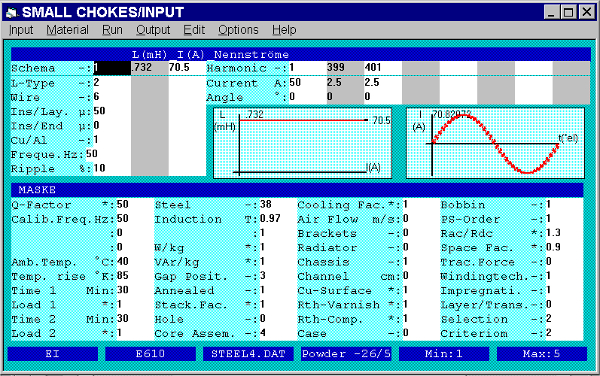


Moreover, its employment has contributed to the decrease of the transformer industrial cycle and production cost. The comparison of its results with measured values indicates the improvement of accuracy in comparison to the existing methodology, resulting in reduction of the design margin. The software has been incorporated in the design process of a transformer manufacturing industry for the evaluation of the leakage field and short-circuit impedance.

The computational efficiency is also enhanced by the use of Morse technique for the storage of finite element matrices and Preconditioned Conjugate Gradient method for the solution of the finite element equations. This method, in conjunction with the detailed representation of the real transformer geometry enables the achievement of high accuracy with the use of meshes of low density. For the development of the package, a particular scalar potential formulation was adopted. High accuracy, low computational cost, minimization of user interaction and functional interface are the main advantages of the software, rendering it a powerful computational tool for characteristics prediction of single and dual voltage transformers, suitable for an automated design environment. The package consists of an automated pre-processor, magnetostatic solver and post-processor. In this paper, an integrated, three-dimensional, finite element package for the analysis and design of power transformers is developed, requiring no prior user experience in numerical methods and magnetic field simulation. The proposed method is compared with a heuristic optimization method of the transformer manufacturing industry and the results demonstrate the robustness and the superiority of this new approach. The main contributions of this research are: i) introduction of a new overall transformer optimization method, minimizing either the overall transformer materials cost or the overall transformer materials and operating cost, ii) expansion of the solution space by innovative techniques that define the variation of crucial design variables such as the conductors' cross-section, ensuring global optimum transformer designs, and iii) incorporation of numerical field computation in order to validate the feasibility of the optimum designs. This paper addresses the complex optimum transformer design problem, which is formulated as a mixed-integer nonlinear programming problem, by introducing an integrated design optimization method based on evolutionary algorithms and numerical electromagnetic and thermal field computations.


 0 kommentar(er)
0 kommentar(er)
